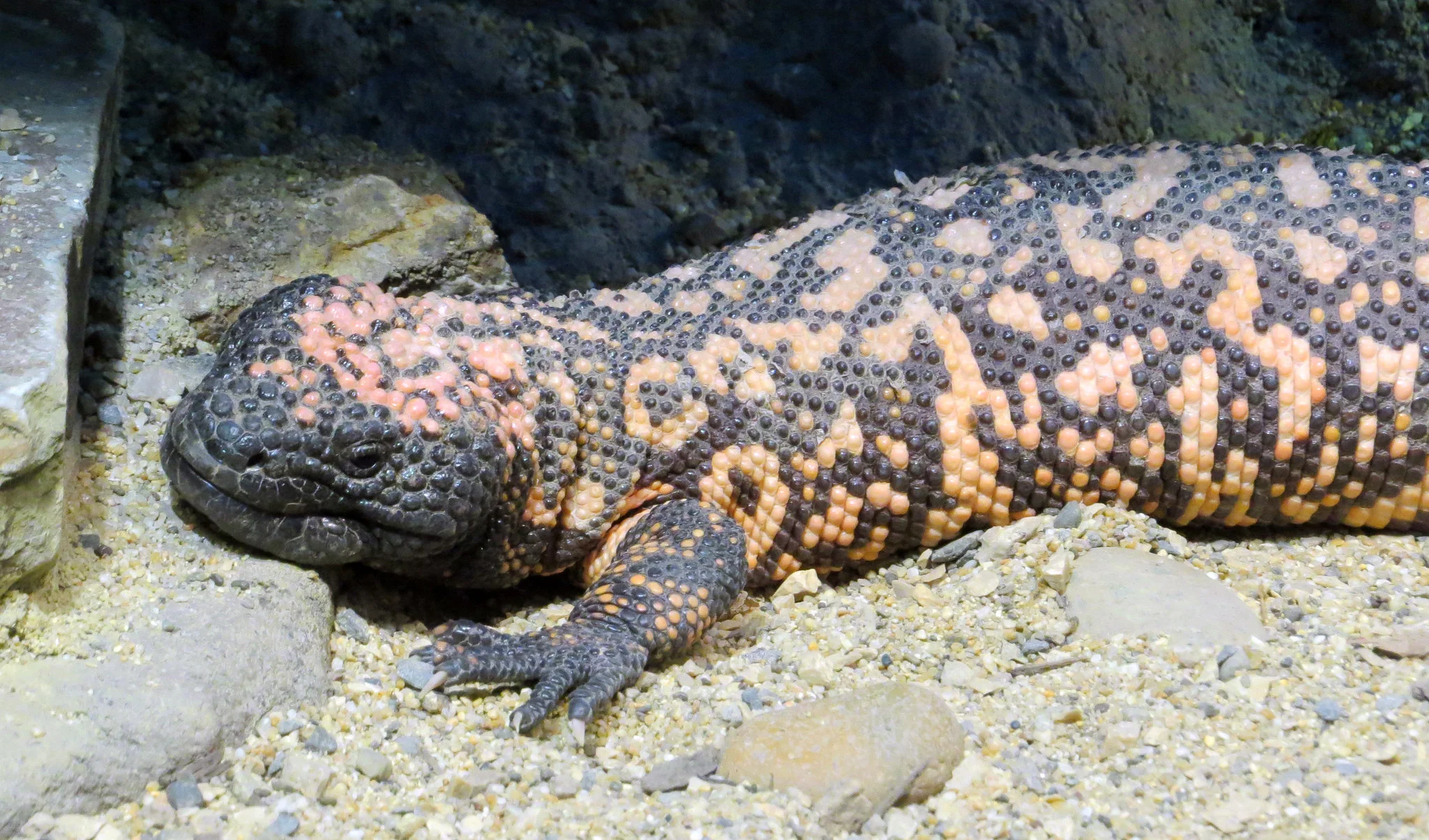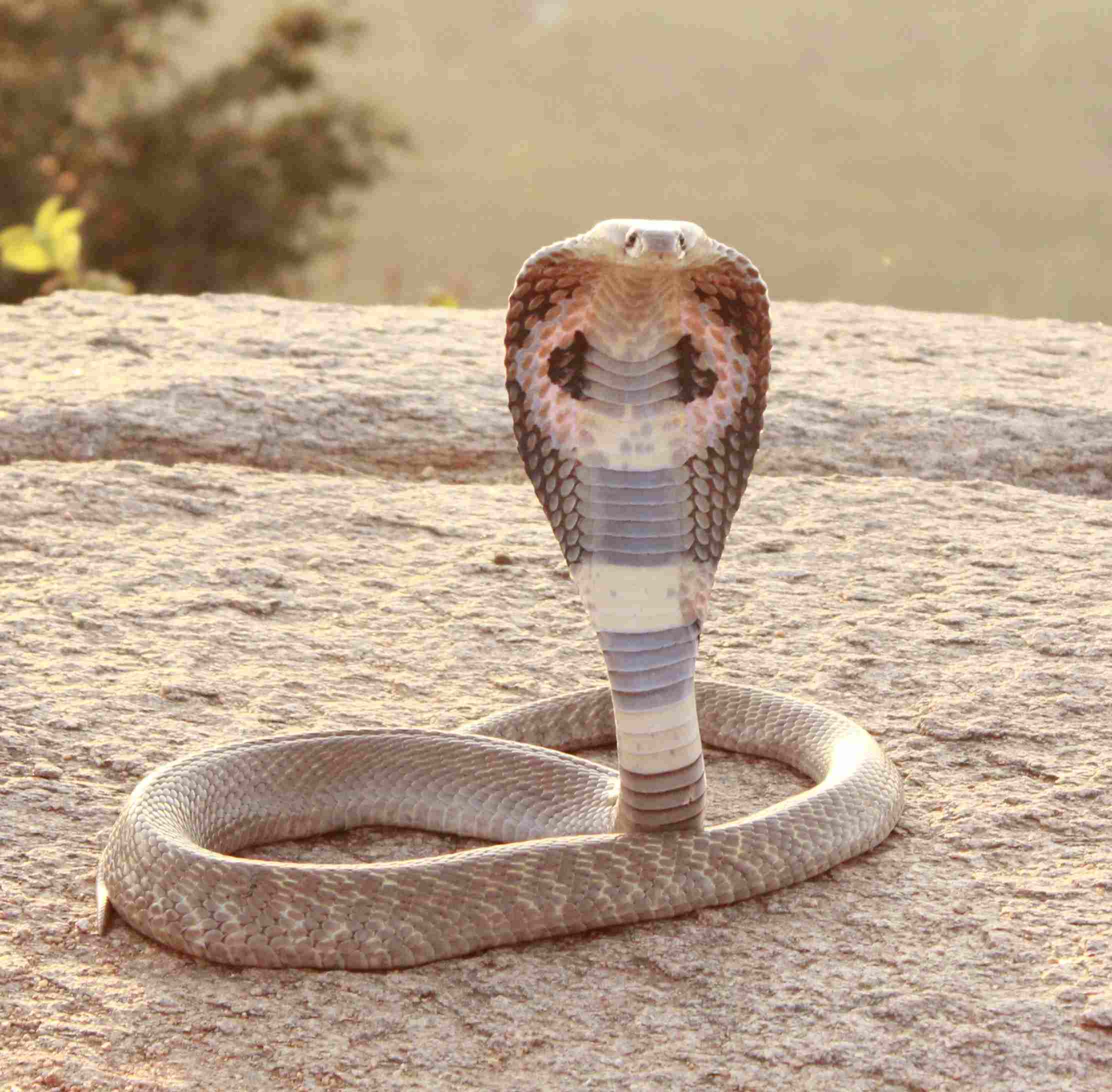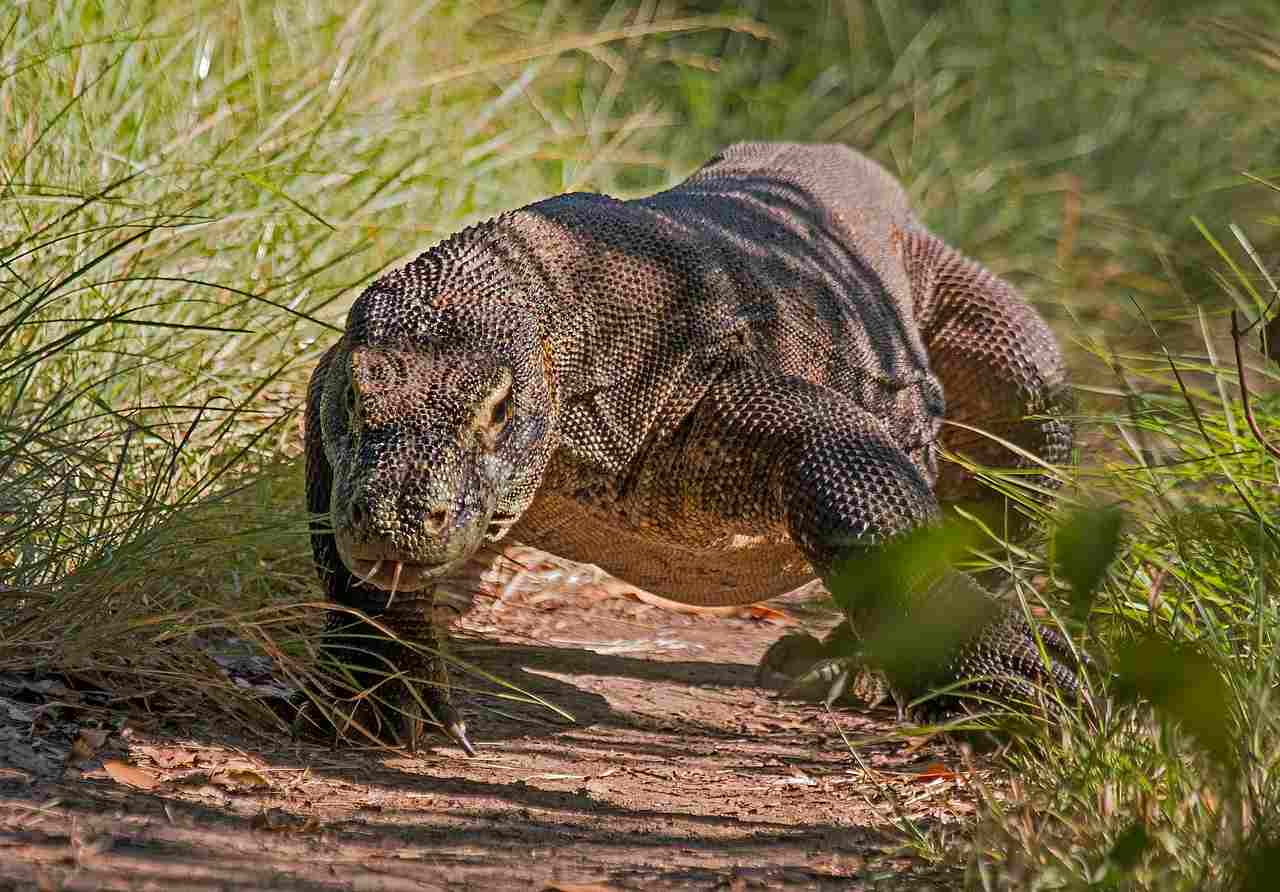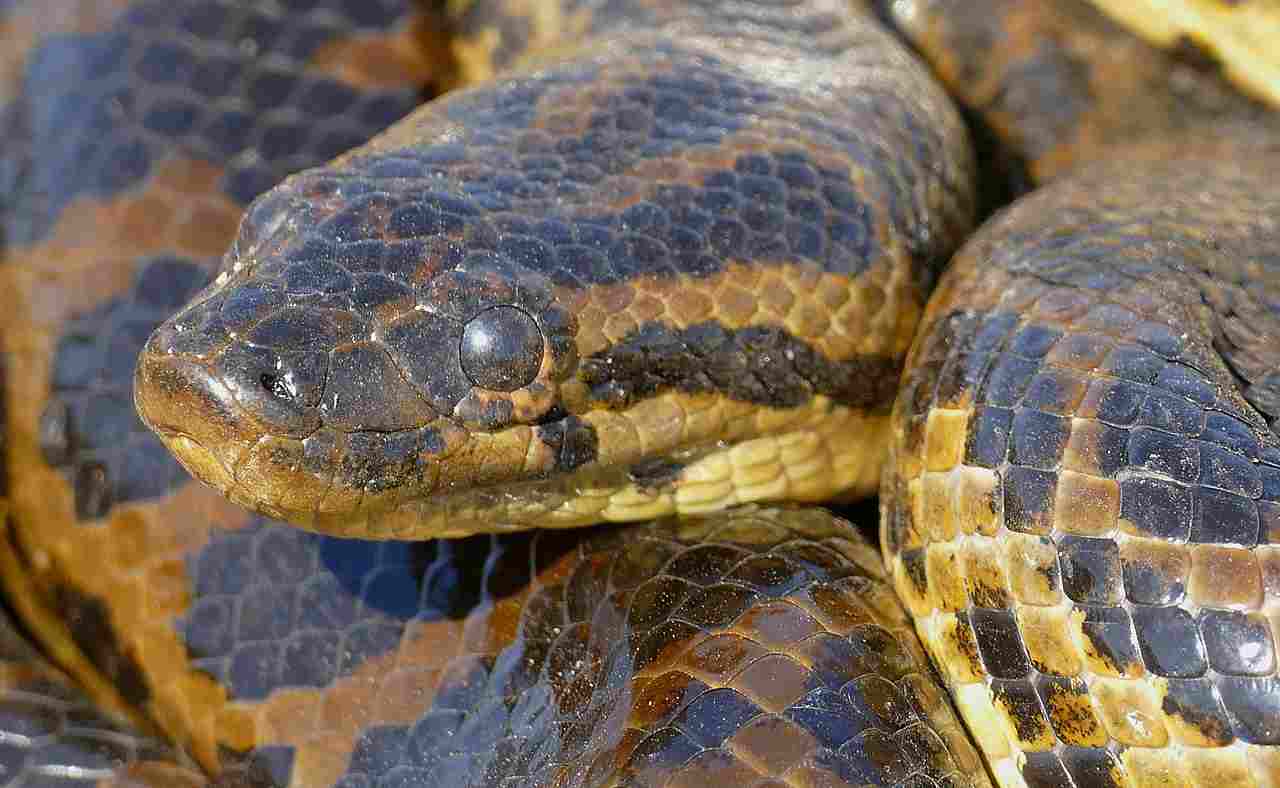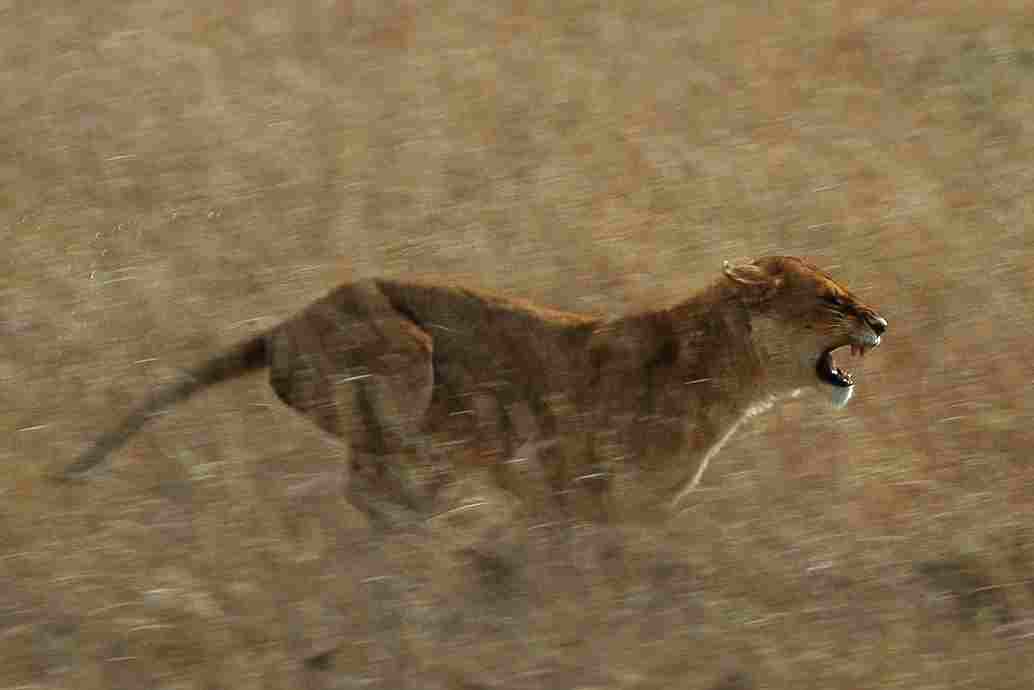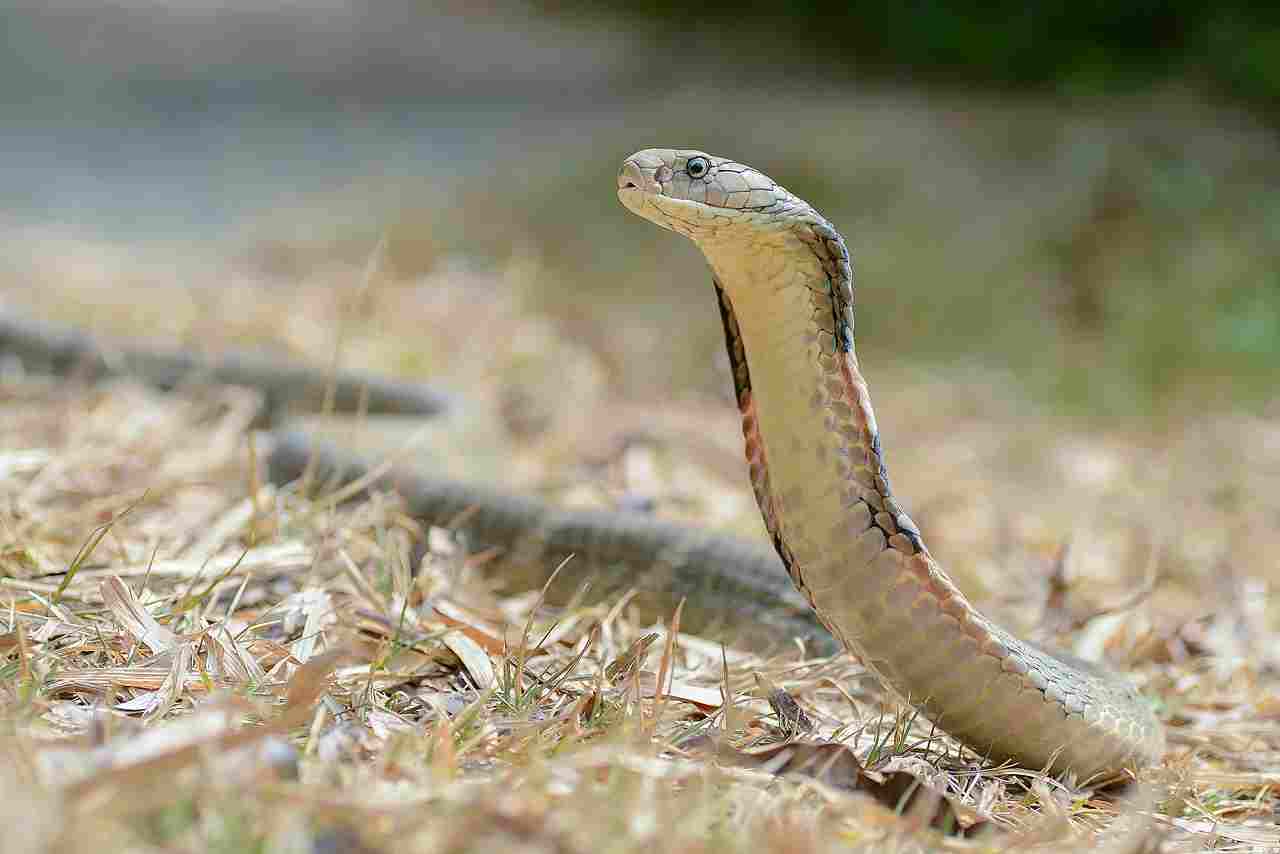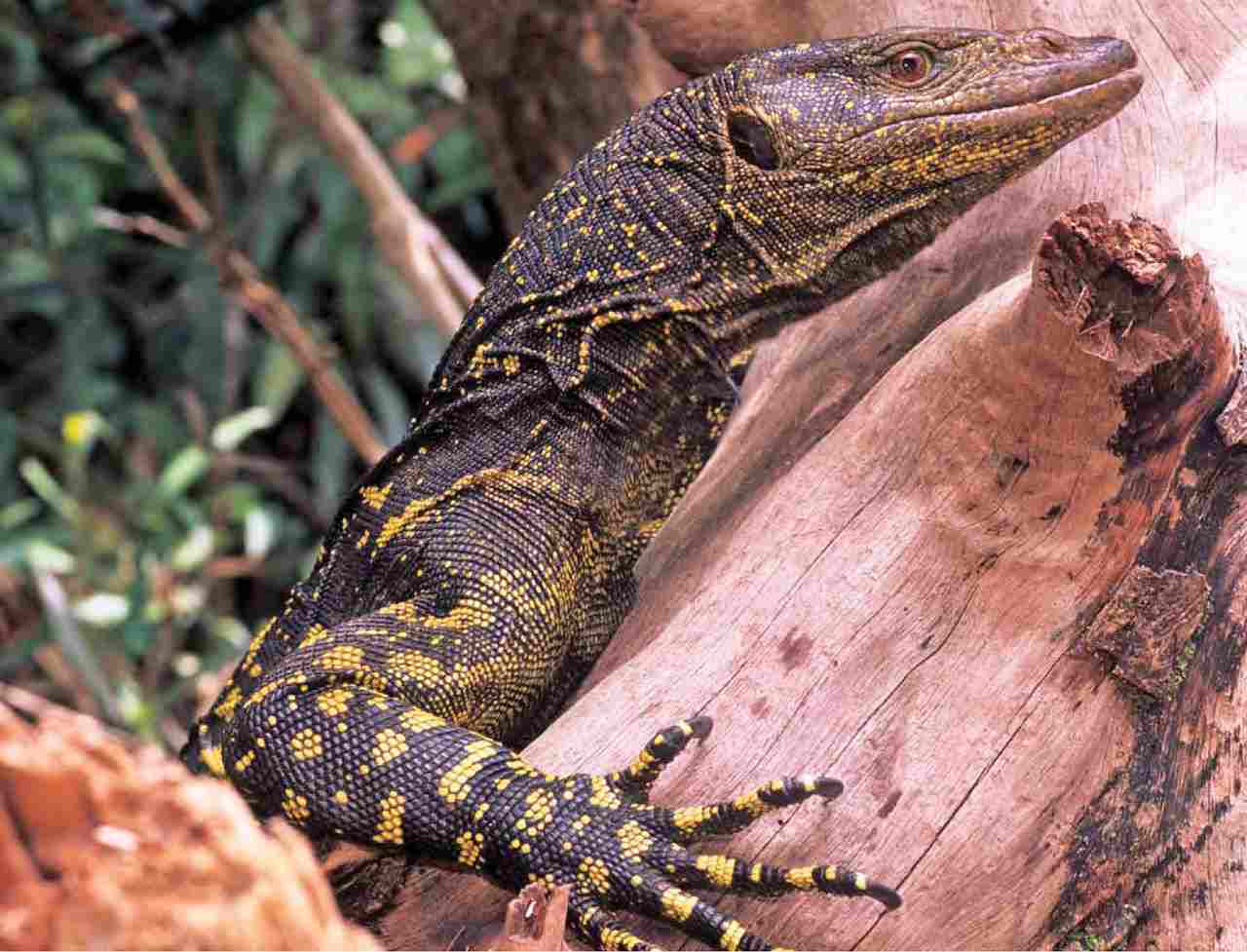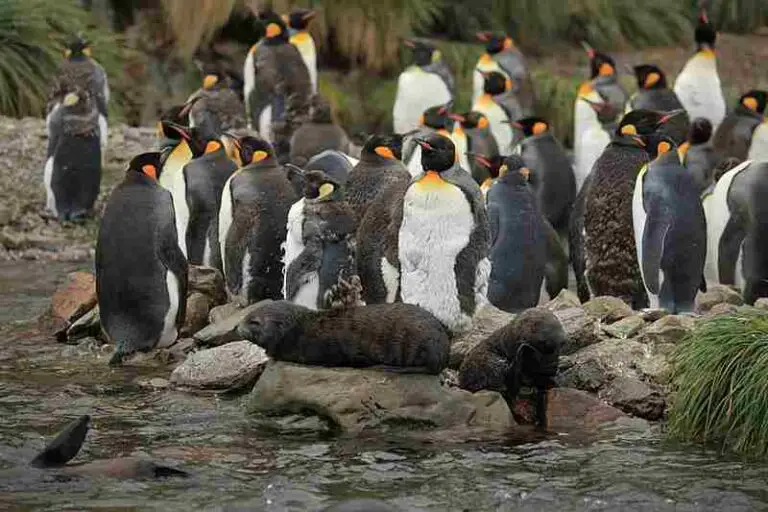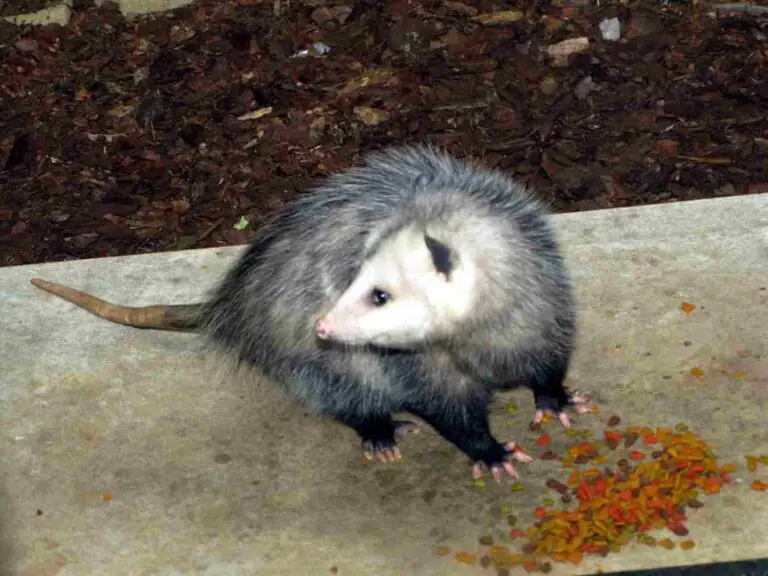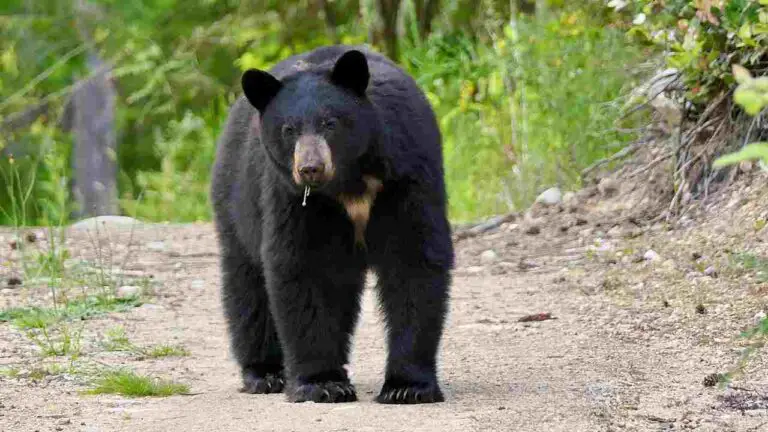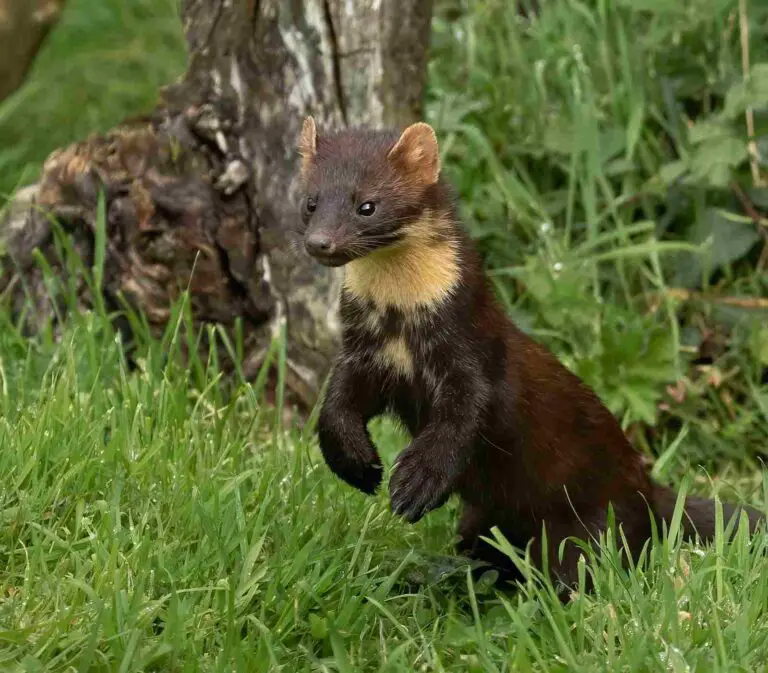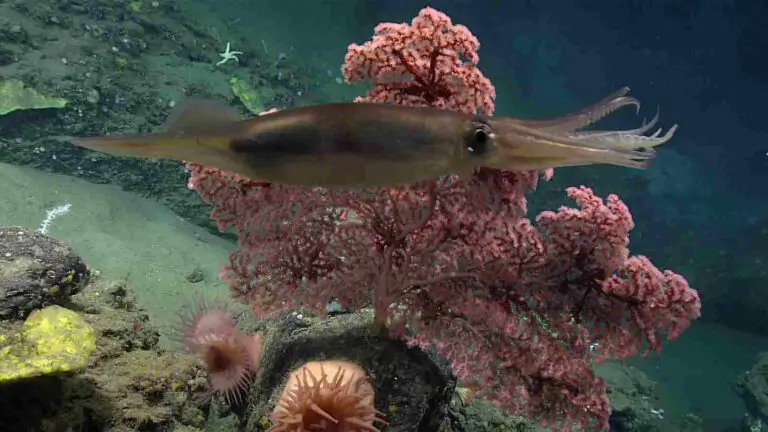Komodo Dragon Vs Tiger Who Would Win, Overall Comparison
Contrasting the Komodo dragon and the tiger reveals distinct differences in their attributes as formidable predators. While both are apex predators in their respective habitats, the tiger’s superior physical capabilities, speed, agility, aggression, intelligence, and weaponry make it the likely victor in a real-life confrontation with the Komodo dragon. The Komodo dragon’s potential to harm the tiger is limited to the rare opportunity to bite and inject venom, an unlikely scenario compared to the tiger’s overall dominance.
I. Komodo Dragon vs Tiger: Apex Predators with Contrasting Attributes:
– The Komodo dragon and tiger, both apex predators, exhibit differences in their physical capabilities and predatory strategies that influence their effectiveness in potential confrontations.
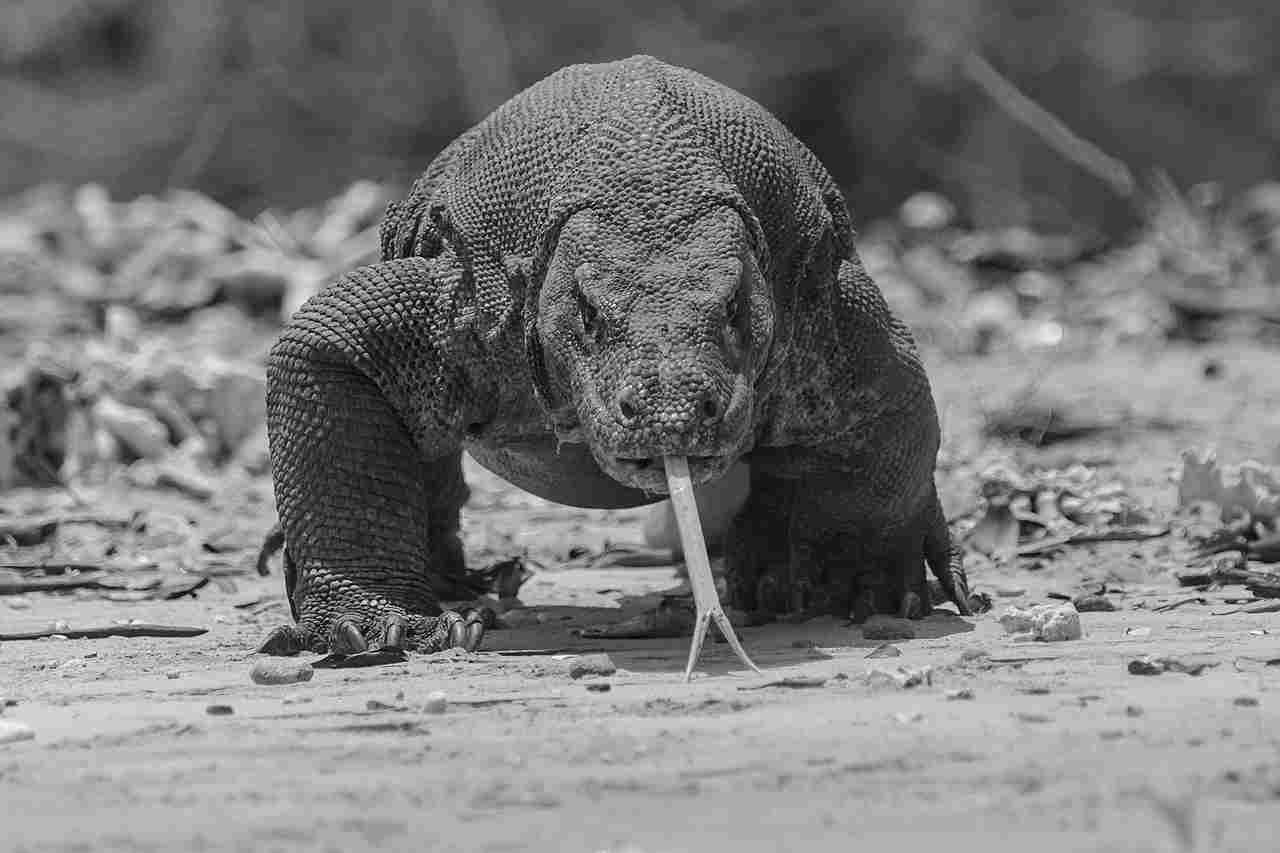
II. Physical Differences:
– Tigers, being mammals, possess attributes such as speed, agility, and aggression that differ significantly from the Komodo dragon’s reptilian characteristics. Tigers are also equipped with a powerful bite force and sharp claws, contributing to their effectiveness as predators.
III. Speed and Agility:
– Tigers are known for their exceptional speed and agility, allowing them to maneuver swiftly in their environment. In comparison, the Komodo dragon’s movement is more deliberate, making it less adept in terms of agility and speed.
IV. Aggression and Intelligence:
– Tigers are highly aggressive predators with advanced intelligence and sharp instincts. This aggression, coupled with their ability to strategize during hunting, provides them with a distinct advantage over the Komodo dragon.
V. Weaponry and Bite Force:
– Tigers possess sharp claws and a strong bite force, making them formidable predators with effective weaponry. In contrast, the Komodo dragon’s weaponry is limited to its bite and venomous glands, which are less potent in comparison to the tiger’s physical attributes.
VI. Real-life Predator Dynamics:
– In a real-life confrontation between a Komodo dragon and a tiger, the tiger’s overall superiority in speed, agility, aggression, intelligence, and weaponry positions it as the likely victor. The Komodo dragon’s limited opportunities to harm the tiger are contingent on rare instances of successful venom injection.
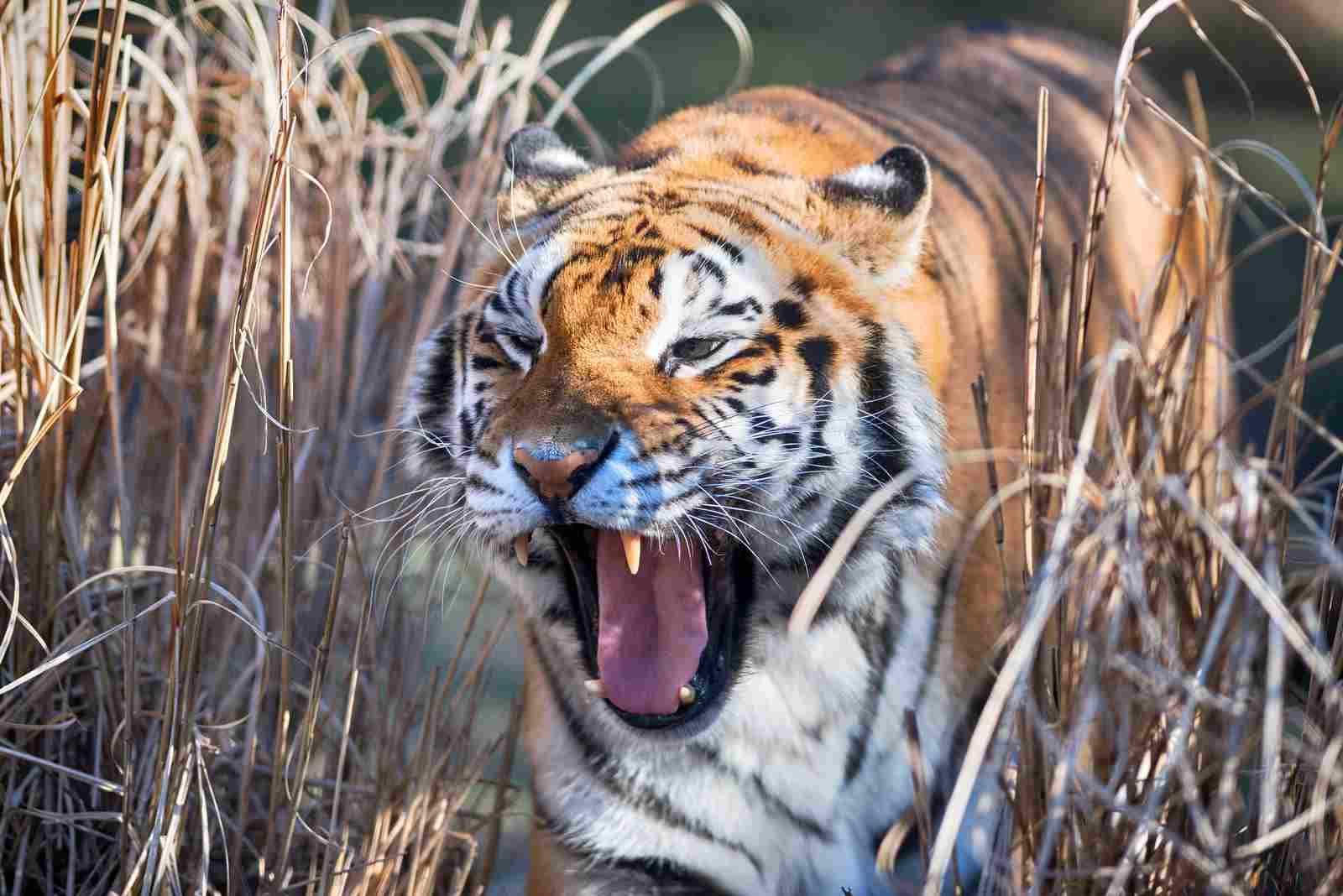
VII. Conservation Significance:
– Recognizing the unique attributes of both Komodo dragons and tigers is crucial for conservation efforts. Tailoring strategies to protect these apex predators contributes to the preservation of biodiversity and ecosystem balance in their respective habitats.
*Details of Comparison
| Criteria | Komodo Dragon | Tiger |
| Taxonomy | Reptile (V. komodoensis) |
Mammal (P. tigris)
|
| Appearance | Scaled, cryptic coloration |
Feline, orange coat, stripes
|
| Size | 7-10 feet (length) |
Up to 10 feet (length)
|
| Weight | Around 150 pounds |
400-700 pounds (males)
|
| Bite Force (PSI) | 600 PSI | 1,000 PSI |
| Physical Offensive Advantages | Bite, bacterial infection |
Speed, powerful jaws, claws
|
| Physical Defensive Advantages | Tough, scaled skin |
Camouflage, agility
|
| Speed | Up to 12 mph | Up to 40 mph |
| Agility | Climbing abilities, agile |
Highly agile, versatile
|
| Senses | Good vision, hearing, tongue |
Night vision, acute smell
|
| Overall Physical Capacity | Endurance, stamina |
Strength, speed, agility
|
| Habitat & Region | Indonesian islands |
Varied habitats across Asia
|
| Tracks | Clawed, dragging tail mark |
Padded prints, four-toe pattern
|
| Lifespan | 20-30 years | 10-15 years |
| Mode of Feeding | Bite and wait, scavenging |
Stalking, ambushing, chasing
|
| Intelligence | Limited studies, cognitive | Highly intelligent |
| Social Behavior | Generally solitary |
Mostly solitary, some social
|
| Reproduction | Oviparous, egg-laying |
Viviparous, live birth
|
| Parental Behavior | Limited parental care |
Intensive maternal care
|
| Proximity to Human Areas | Limited to specific islands |
Historic range near settlements
|
| Behavior Toward Humans | Generally avoids, rare attacks |
Can be aggressive, especially when threatened
|
| Danger Posed to Humans | Potentially dangerous bites |
More significant danger due to size and predatory nature
|
| Precautions | Caution, maintaining distance |
Strict precautions, education on tiger behavior
|
| Conservation Status | Vulnerable |
Various subspecies, some Endangered or Critically Endangered
|
1. Taxonomy:
Komodo Dragon (Varanus komodoensis):
Kingdom: Animalia
Phylum: Chordata
Class: Reptilia
Order: Squamata
Family: Varanidae
Genus: Varanus
Species: V. komodoensis
Tiger (Panthera tigris):
Kingdom: Animalia
Phylum: Chordata
Class: Mammalia
Order: Carnivora
Family: Felidae
Genus: Panthera
Species: P. tigris
2. Appearance:
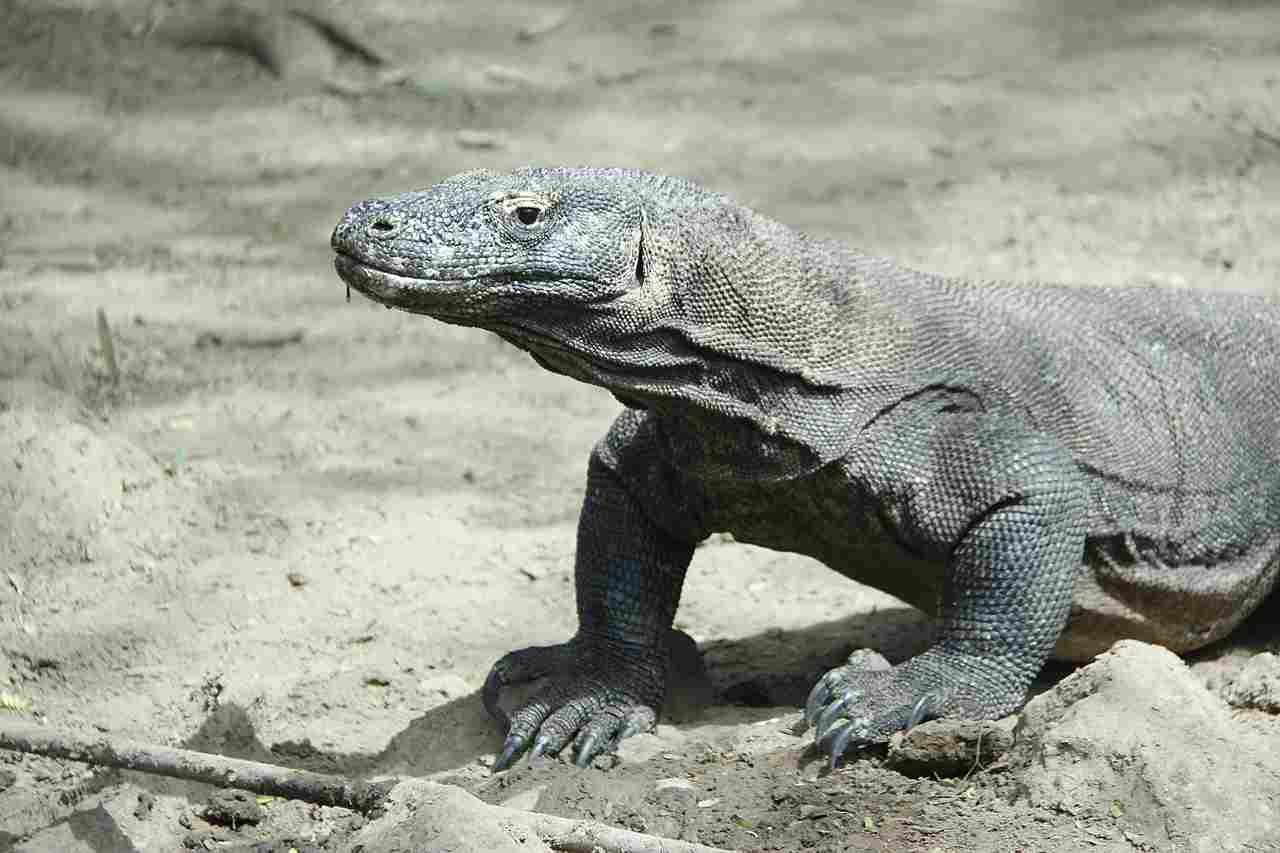
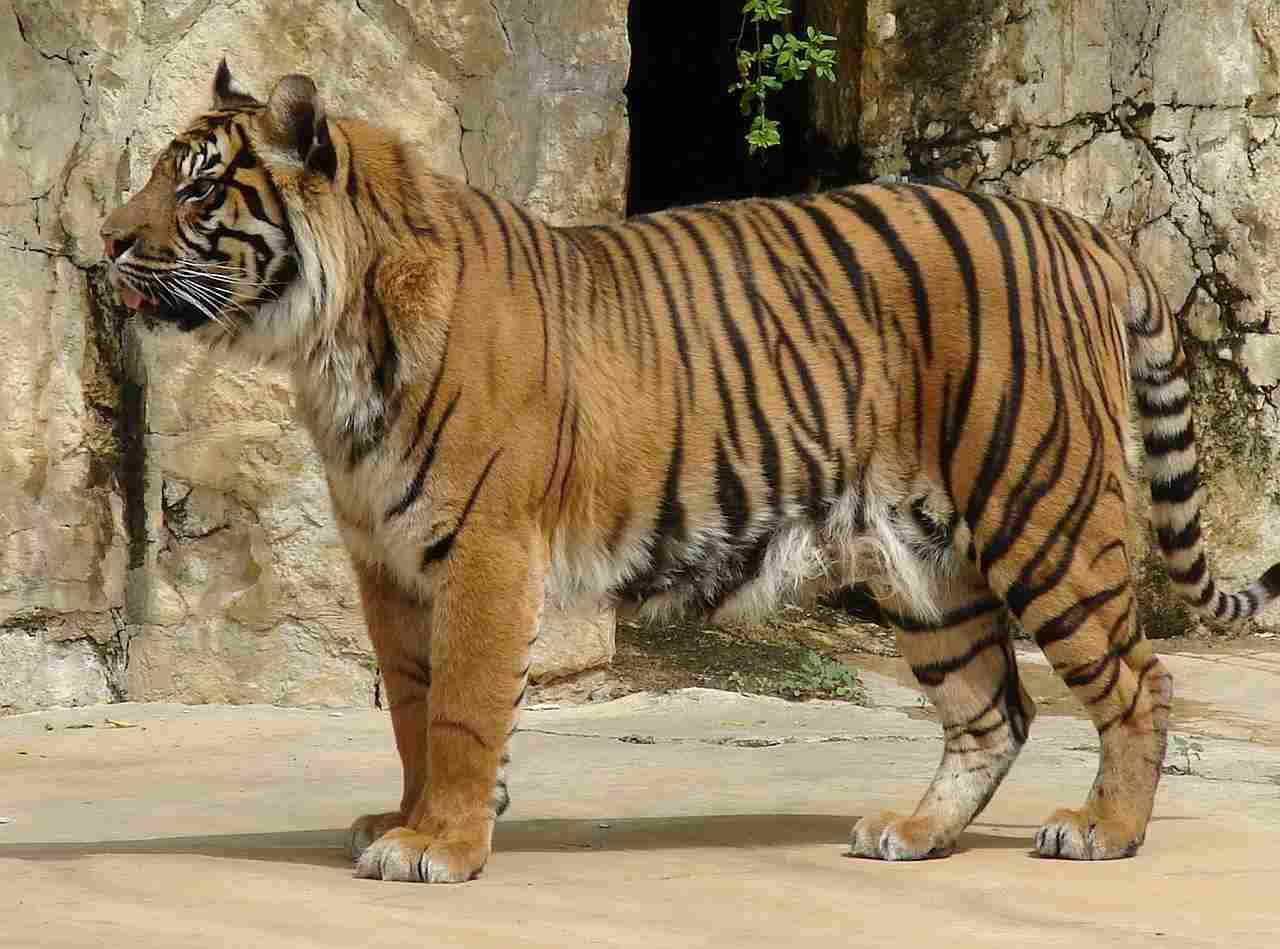
Komodo Dragon:
Scaled reptile with rugged, gray-brown skin, reaching lengths of up to 10 feet.
Stout build, powerful legs, long tail, and a distinctive, forked tongue for sensory perception.
Cryptic coloration aids in camouflaging within its environment.
Tiger:
Large feline with a distinctive orange coat, dark stripes, and a white underbelly.
Robust body, powerful limbs, sharp claws, and a strong, predatory stance.
Striking appearance reflects adaptation for stealth and hunting in diverse habitats.
Comparison: The Komodo Dragon displays reptilian features with protective scales, while the Tiger showcases mammalian characteristics with fur and stripes.
Ecological Implications: Camouflaged appearance aids the Komodo Dragon in ambushing prey, while the Tiger’s stripes provide effective concealment during hunting.
3. Size:
Komodo Dragon:
Adult males typically range from 7 to 10 feet in length, with females generally smaller.
Considered one of the largest lizard species globally.
Tiger:
Adult males can weigh between 400 to 700 pounds and measure up to 10 feet in length.
Females are smaller but still exhibit substantial size.
Comparison: Both the Komodo Dragon and Tiger are formidable in size within their respective categories of reptiles and mammals.
Ecological Implications: Their size contributes to their roles as apex predators, influencing prey populations and shaping the dynamics of their ecosystems.
4. Weight:
Komodo Dragon:
Adult males weigh around 150 pounds on average, while females are generally smaller.
Tiger:
Adult male Tigers can weigh between 400 to 700 pounds, with females weighing less.
Comparison: Tigers significantly outweigh Komodo Dragons, reflecting the contrasting body mass between reptiles and mammals.
Ecological Implications: The Tiger’s substantial weight enhances its predatory prowess, impacting the balance of prey species in its habitat.
5. Bite Force (PSI):
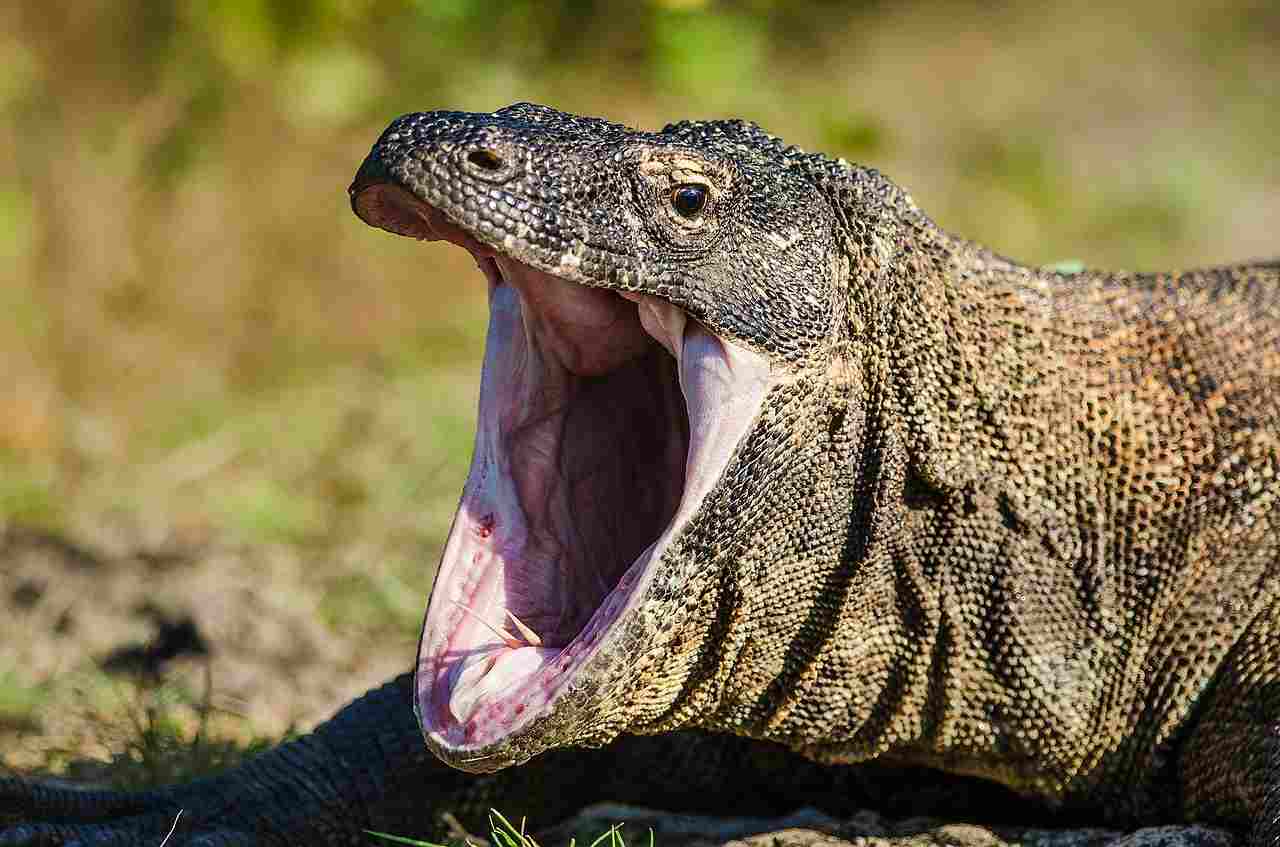
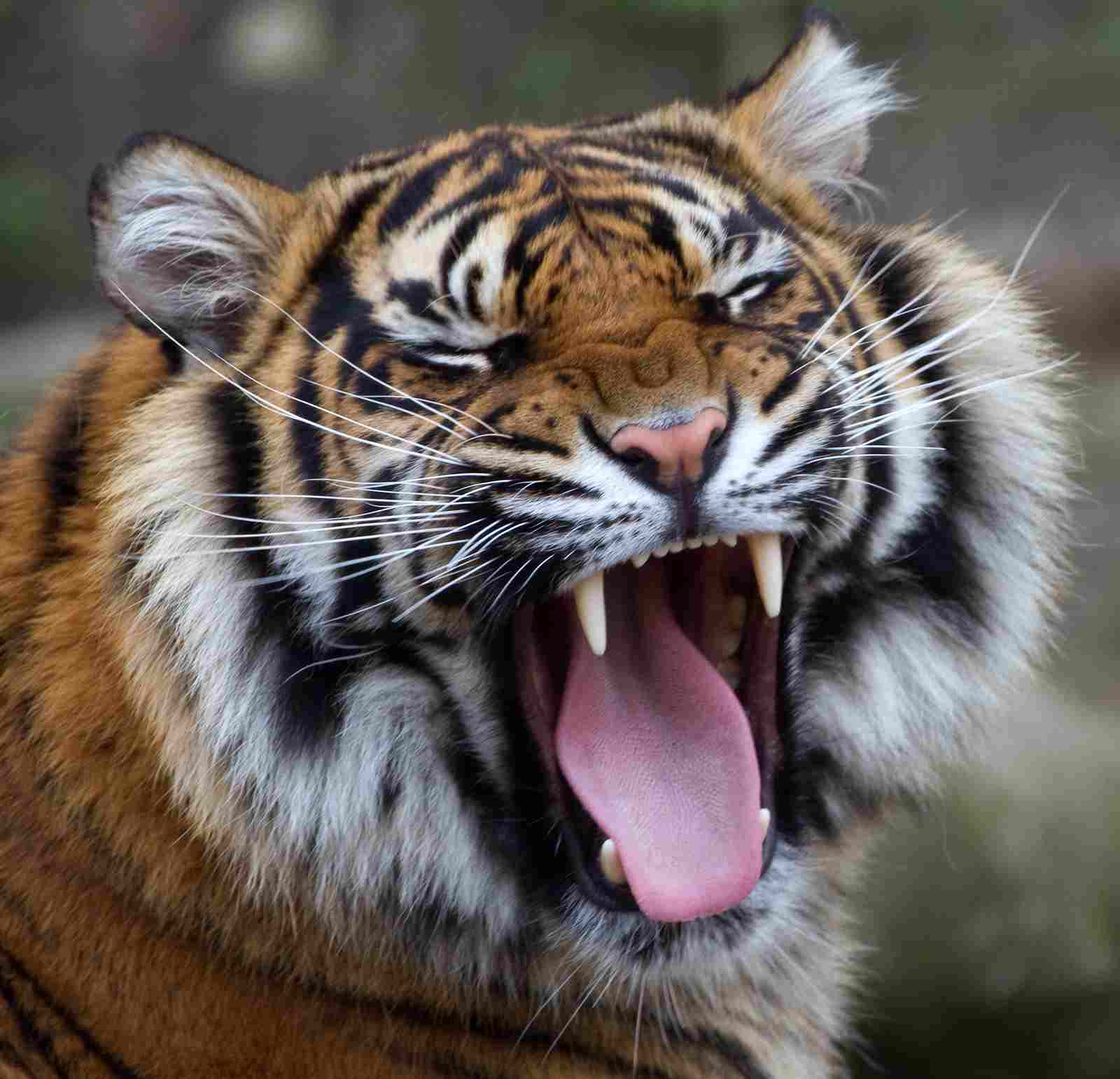
Komodo Dragon:
Bite force estimated around 600 PSI.
Possesses bacteria-laden saliva that aids in weakening prey over time.
Tiger:
Bite force estimated around 1,000 PSI.
Powerful jaws and sharp teeth designed for killing and consuming large prey.
Comparison: Tigers exhibit a stronger bite force than Komodo Dragons, reflecting the different hunting strategies employed by mammals and reptiles.
Ecological Implications: Bite force influences prey selection and feeding behaviors, contributing to the ecological roles of these apex predators.
6. Physical Offensive Advantages:
Komodo Dragon:
Sharp, serrated teeth and a powerful bite, combined with the potential danger of bacterial infections from its saliva.
Ambush tactics, stealth, and speed when closing in on prey.
Tiger:
Strong jaws, sharp teeth, and retractable claws for efficient hunting.
Exceptional speed and agility, enabling effective pursuit and takedowns.
Comparison: While both possess formidable offensive capabilities, the Komodo Dragon relies on its bite and bacterial infection strategy, while the Tiger utilizes speed and a combination of teeth and claws.
Ecological Implications: These offensive strategies contribute to shaping prey populations and maintaining ecosystem balance.
7. Physical Defensive Advantages:
Komodo Dragon:
Tough, scaled skin provides protection against external threats.
Quick reflexes and agility for evading potential dangers.
Tiger:
Camouflaged fur and a stealthy nature aid in avoiding detection by predators and prey.
Agility and the ability to climb trees provide escape routes when threatened.
Comparison: Both species have evolved physical adaptations for defense, with the Komodo Dragon relying on its tough skin and agility, while the Tiger utilizes camouflage and agility.
Ecological Implications: Defensive mechanisms influence predator-prey interactions, impacting the overall dynamics of their respective ecosystems.
8. Speed (Km/hour or Mile/hour):
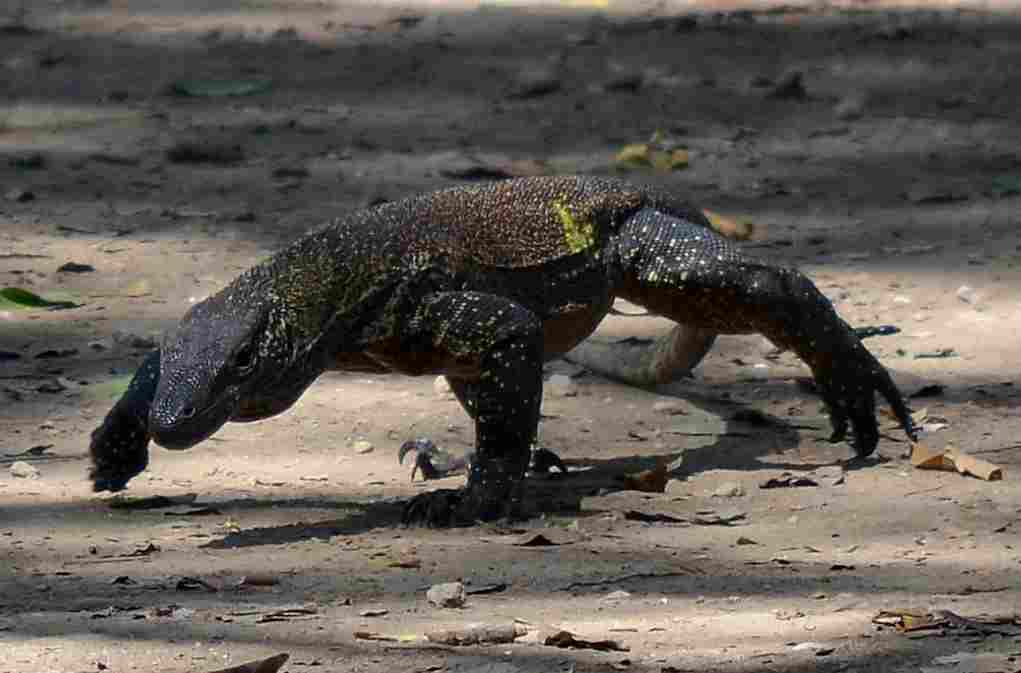
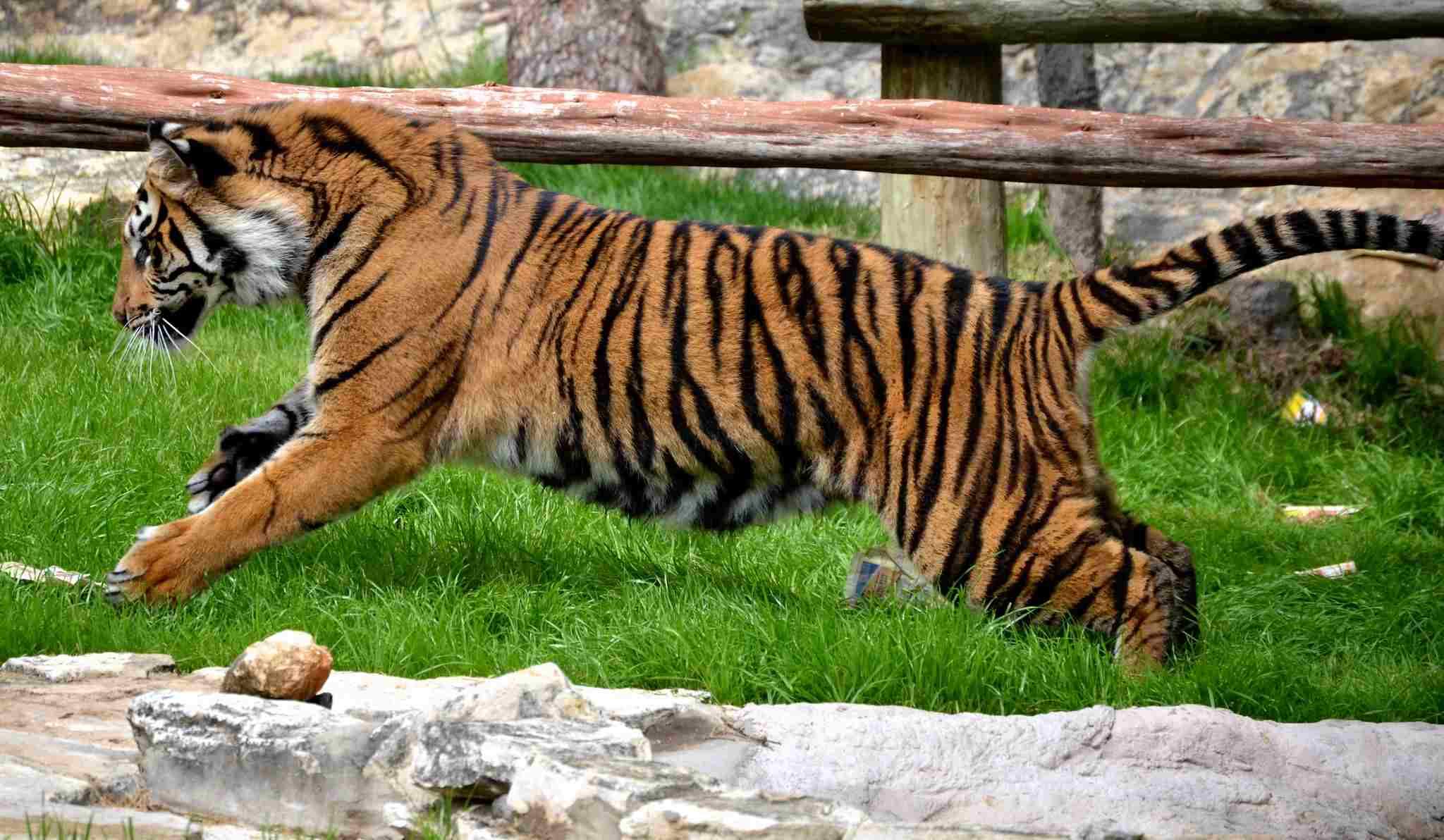
Komodo Dragon:
Can reach speeds of up to 12 mph (20 km/h) in short bursts.
Relies on stealth and ambush rather than sustained high-speed pursuit.
Tiger:
Capable of reaching speeds up to 40 mph (65 km/h) in short sprints.
Agile and swift, enabling effective hunting strategies.
Comparison: Tigers demonstrate significantly higher speeds, reflecting the mammalian adaptation for quick pursuit during hunting.
Ecological Implications: Speed influences the success of hunting strategies, affecting the population dynamics of prey species.
9. Agility:
Komodo Dragon:
Agile for its size, capable of climbing trees and maneuvering in diverse terrains.
Relies on agility for ambushing prey and avoiding threats.
Tiger:
Highly agile, able to navigate various landscapes with ease.
Agility contributes to effective hunting and evasion of potential dangers.
Comparison: Both species exhibit agility, but the Tiger’s agility is particularly notable, enhancing its hunting and survival capabilities.
Ecological Implications: Agility influences the efficiency of predation and the ability to navigate the complex environments within their habitats.
10. Senses:
Komodo Dragon:
Well-developed sense of smell aided by a forked tongue for detecting chemical cues.
Good vision and hearing contribute to overall sensory perception.
Tiger:
Exceptional night vision and acute sense of smell, crucial for tracking prey.
Excellent hearing aids in detecting subtle sounds in their environment.
Comparison: Both species possess heightened senses, but the Tiger’s acute night vision and exceptional sense of smell contribute to its effectiveness as a nocturnal predator.
Ecological Implications: Sensory adaptations play a crucial role in hunting efficiency and predator-prey dynamics.
11. Overall Physical Capacity:

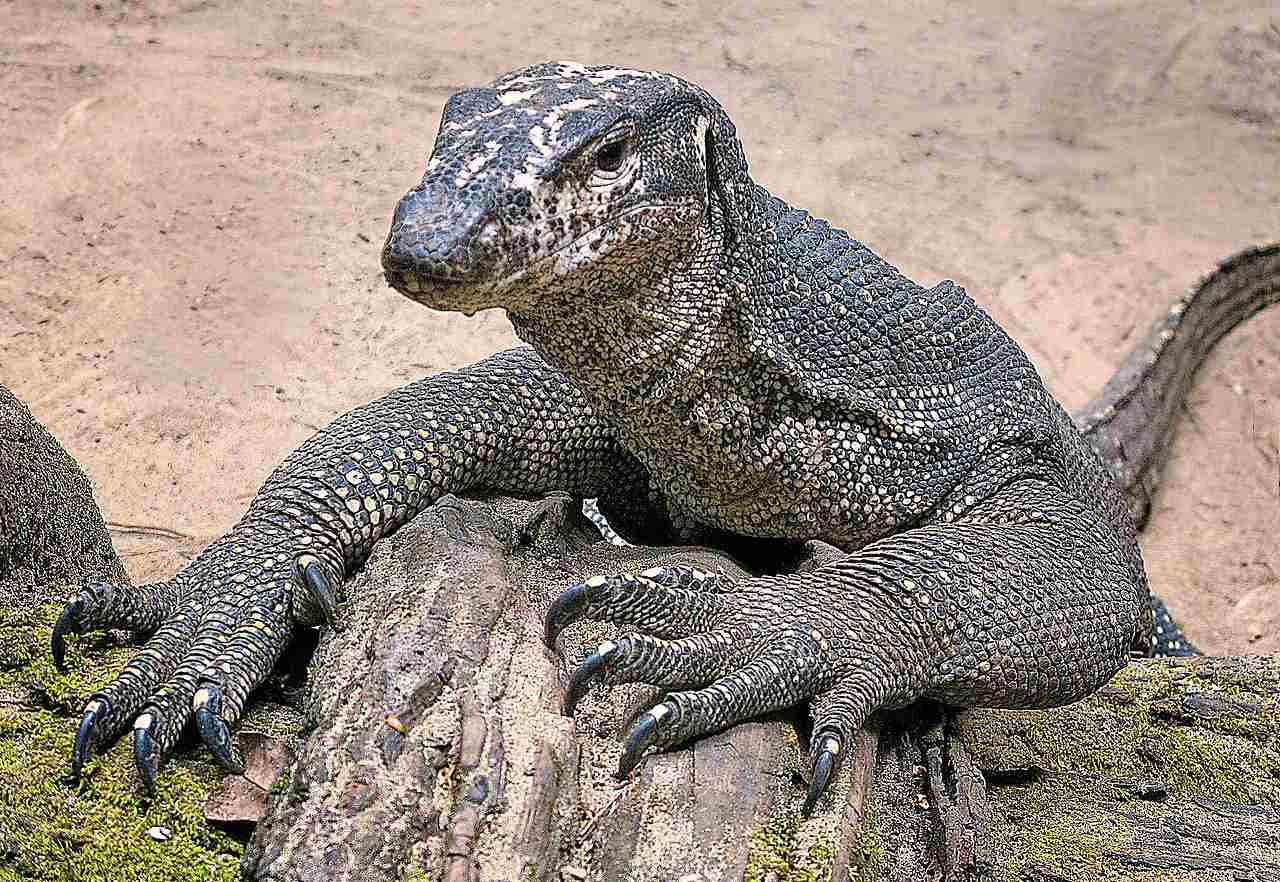
Komodo Dragon:
Well-adapted for ambush hunting and scavenging.
Endurance and stamina for patient stalking.
Tiger:
Powerful physique and versatile capabilities for effective hunting.
High energy levels and agility contribute to successful predation.
Comparison: Tigers exhibit a more versatile physical capacity, combining strength, speed, and agility for efficient hunting.
Ecological Implications: The overall physical capacity of apex predators shapes their roles within ecosystems and influences population dynamics.
12. Habitat Preference(s) and Geographic Region:
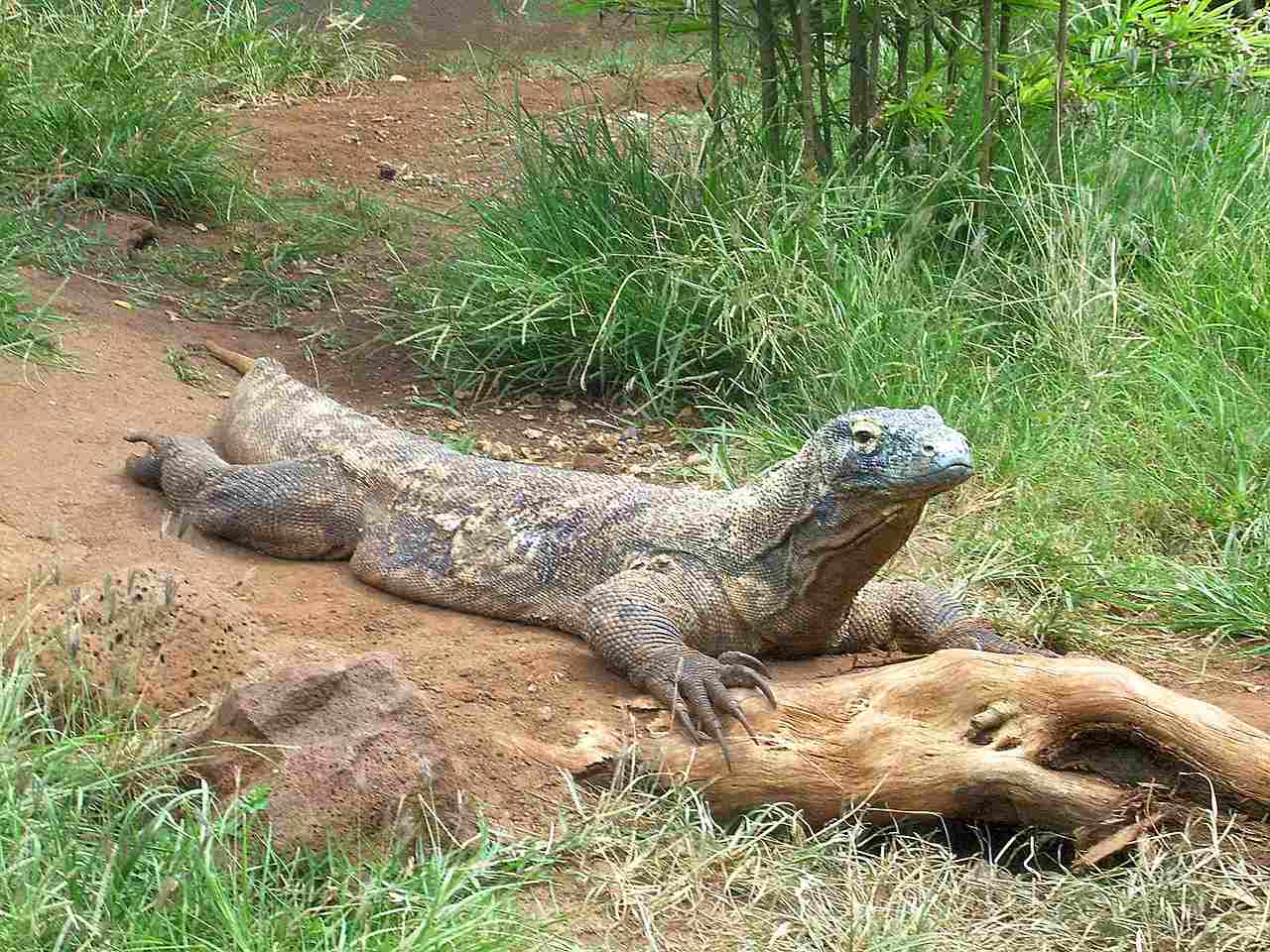
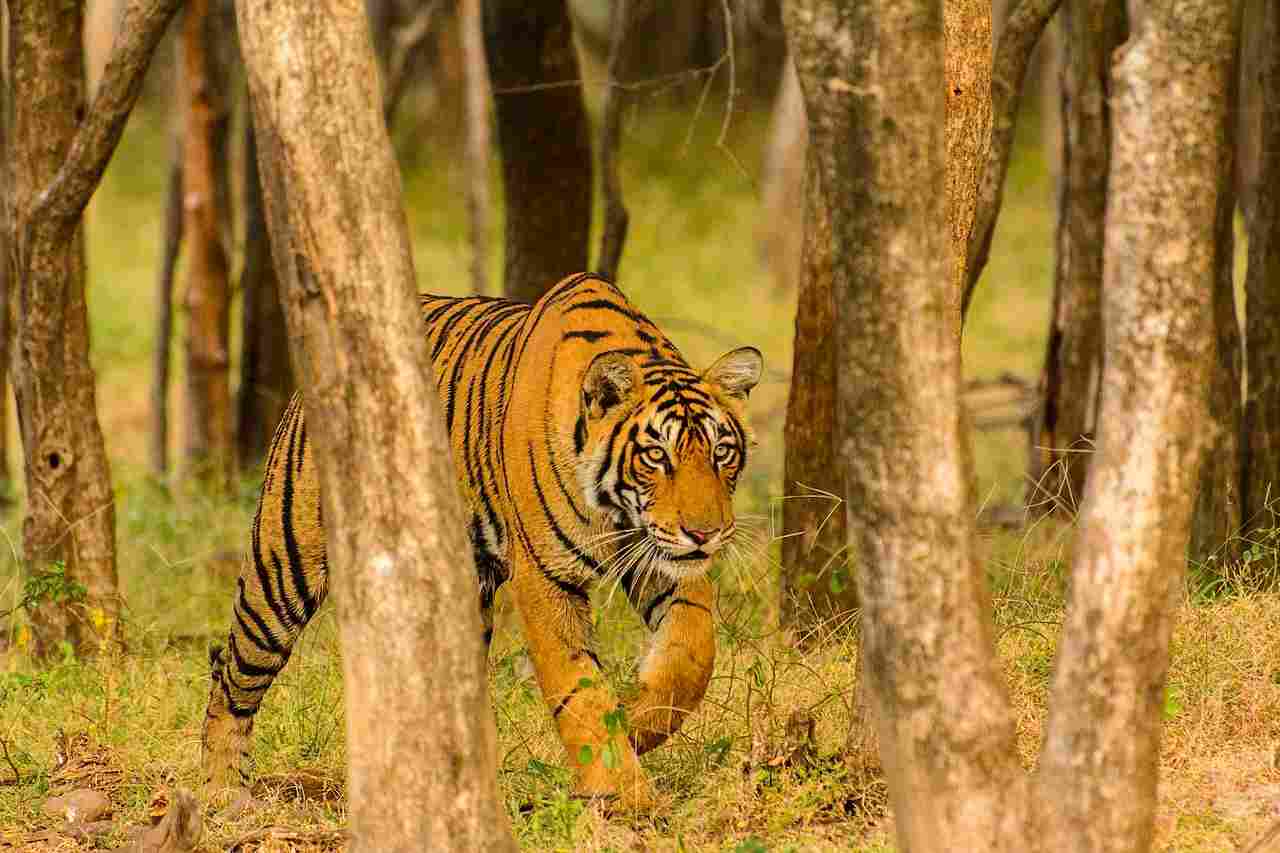
Komodo Dragon:
Prefers tropical savannas and forests.
Endemic to the Indonesian islands of Komodo, Rinca, Flores, and Gili Motang.
Tiger:
Occupies a range of habitats including grasslands, forests, and mangrove swamps.
Historically found across Asia, with specific subspecies adapted to various regions.
Comparison: While both are adaptable, the Komodo Dragon is more geographically restricted, inhabiting specific Indonesian islands, whereas Tigers have a broader distribution.
Ecological Implications: Habitat preferences influence the species’ interactions with other fauna and flora within their ecosystems.
13. Tracks:
Komodo Dragon:
Clawed tracks resembling those of other monitor lizards.
Typically show a distinct dragging tail mark.
Tiger:
Padded paw prints with retractable claws, indicative of a large feline predator.
Symmetrical tracks with a characteristic four-toe pattern.
Comparison: Track morphology reflects the different limb structures and movements between reptiles and mammals.
Ecological Implications: Tracking and identifying these species through footprints contribute to wildlife monitoring and conservation efforts.
14. Lifespan:
Komodo Dragon:
Typically lives up to 20-30 years in the wild.
Slow growth rate and longevity contribute to their ecological impact.
Tiger:
Average lifespan ranges from 10 to 15 years in the wild.
Factors like predation, habitat, and human-wildlife conflict influence their longevity.
Comparison: Komodo Dragons generally have a longer lifespan, impacting their role in the ecosystem over an extended period.
Ecological Implications: Lifespan affects the duration of apex predator presence within ecosystems, influencing population dynamics.
15. Mode of Feeding:
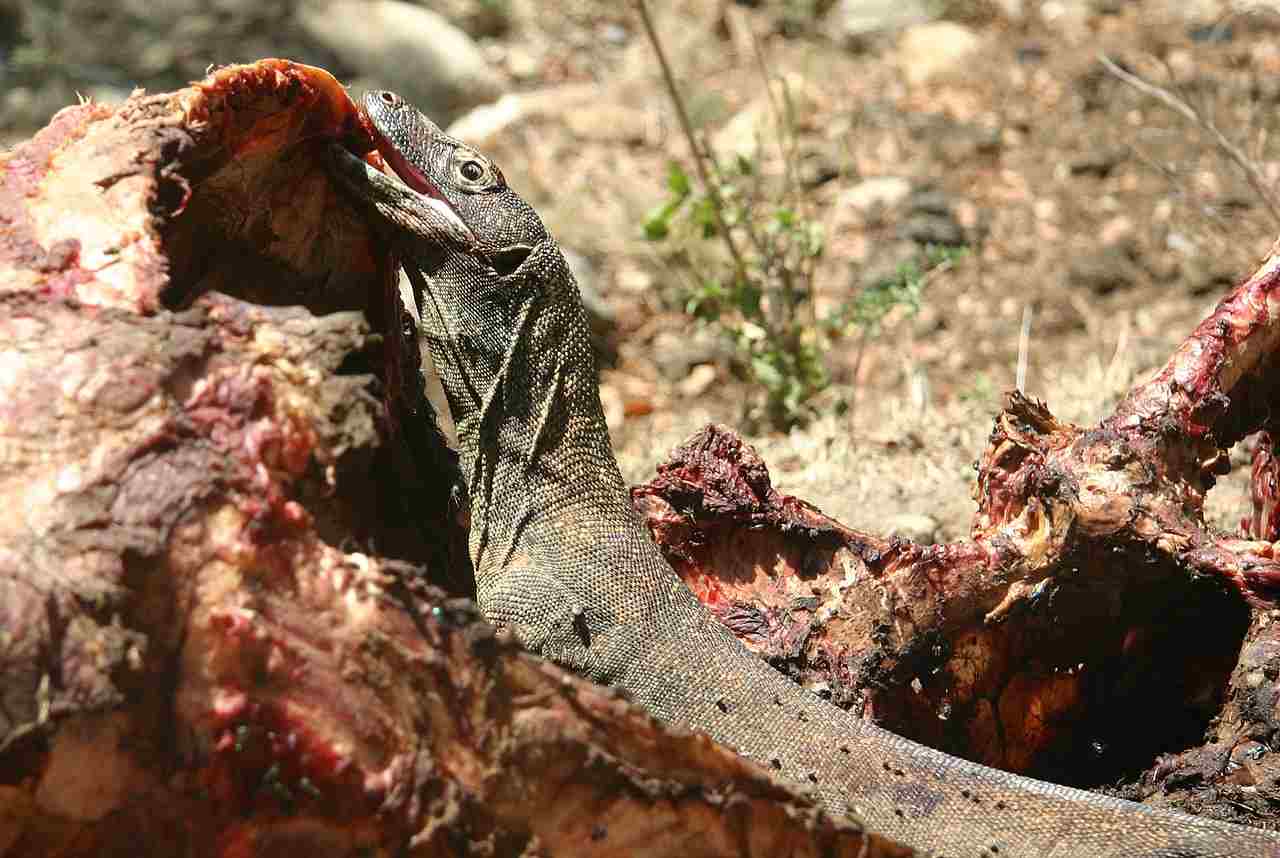
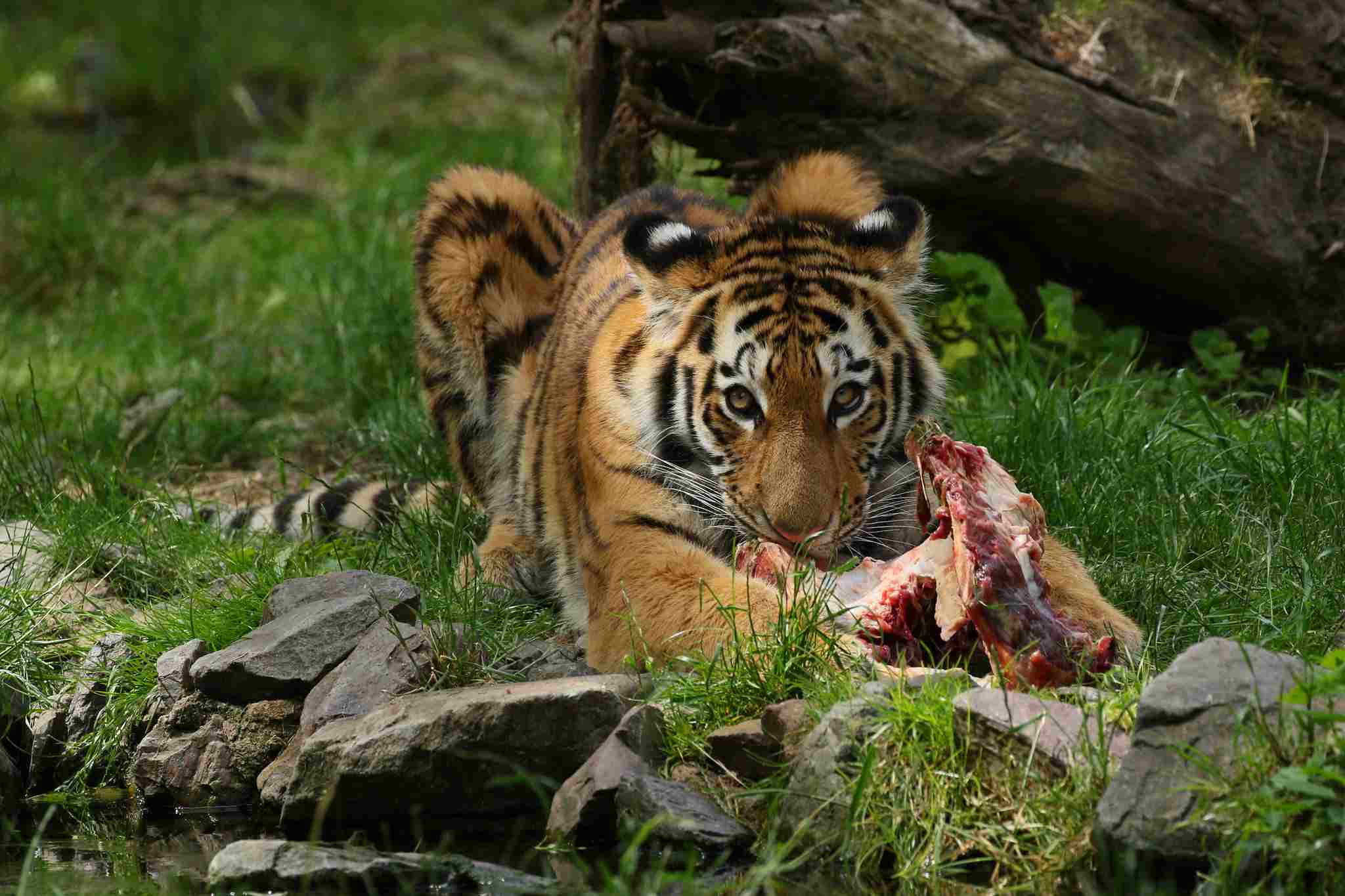
Komodo Dragon:
Carnivorous diet, primarily feeding on mammals and occasionally scavenging on carrion.
Utilizes a bite-and-wait strategy, relying on bacterial infections to weaken prey.
Tiger:
Carnivorous diet with a preference for large ungulates.
Uses a combination of stalking, ambushing, and chasing to capture prey.
Comparison: Both species are carnivorous, but the Komodo Dragon’s unique feeding strategy differs from the Tiger’s more traditional hunting approach.
Ecological Implications: Feeding behaviors impact prey populations and contribute to ecosystem balance.
16. Intelligence:
Komodo Dragon:
Displays problem-solving abilities and social interactions.
Limited studies, but evidence suggests a level of cognitive intelligence.
Tiger:
Highly intelligent with problem-solving skills.
Socially adept, displaying complex behaviors.
Comparison: Tigers exhibit a higher degree of intelligence, likely due to their mammalian brain structure.
Ecological Implications: Intelligence influences the ability to adapt to changing environments and interact within complex ecosystems.
17. Social Behavior:
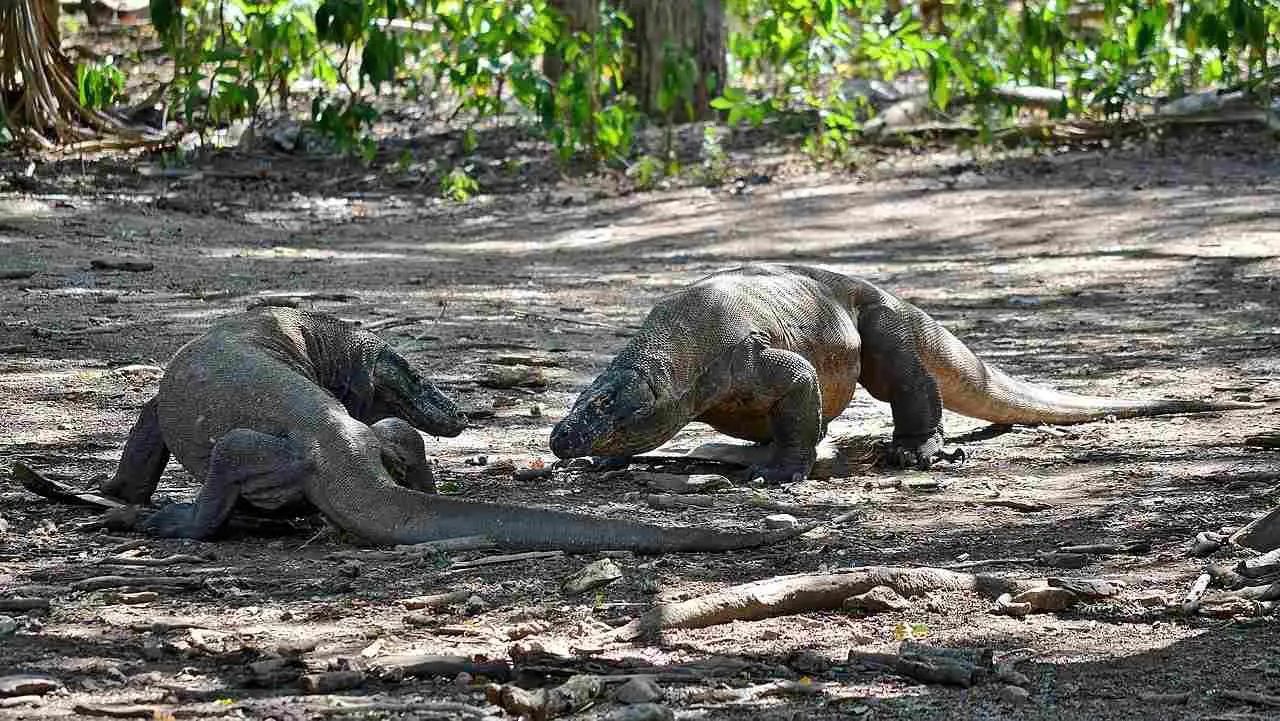
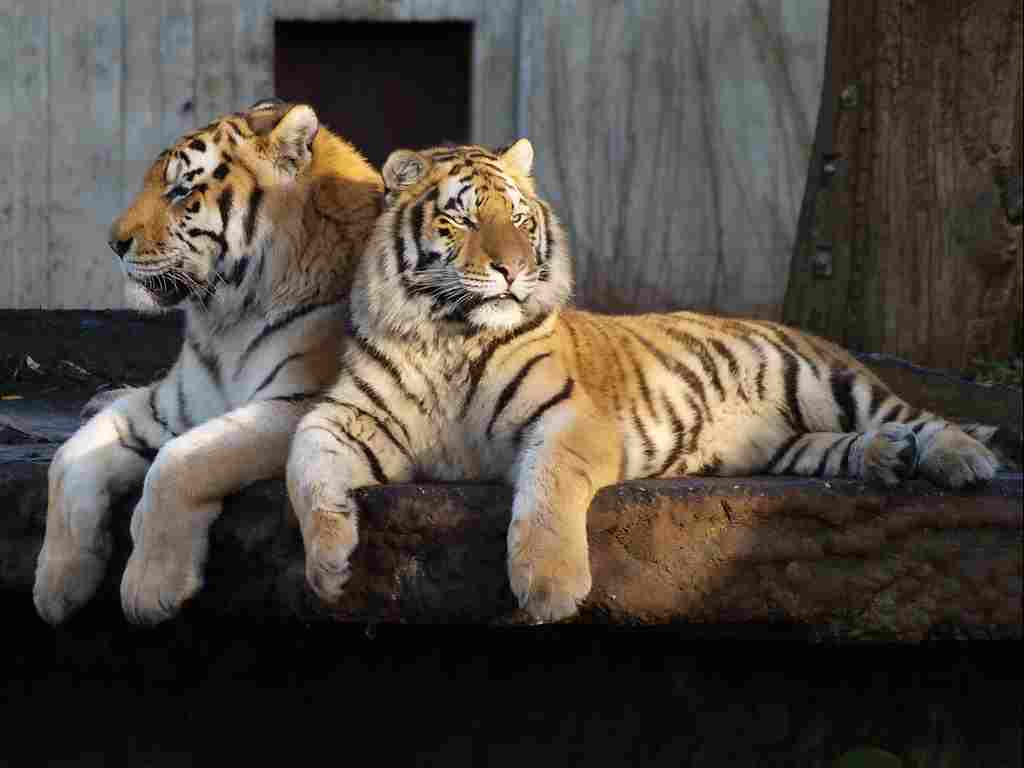
Komodo Dragon:
Generally solitary, with occasional interactions during mating or feeding.
Aggressive behavior towards conspecifics, particularly during competition.
Tiger:
Mostly solitary, except during mating or when raising cubs.
Females may exhibit some degree of social behavior, and there are variations among subspecies.
Comparison: Both species are primarily solitary, but tigers may display more complex social interactions.
Ecological Implications: Social behavior influences population dynamics, particularly in terms of competition and reproduction.
18. Mode of Reproduction:
Komodo Dragon:
Oviparous, laying eggs in nests.
Females may guard nests, but there is no parental care post-hatching.
Tiger:
Viviparous, giving birth to live cubs.
Females provide significant maternal care, including nursing and protection.
Comparison: Komodo Dragons rely on egg-laying with minimal parental care, while Tigers exhibit viviparity with extensive maternal involvement.
Ecological Implications: Differences in reproductive strategies influence population dynamics and the survival of offspring.
19. Parental Behavior:
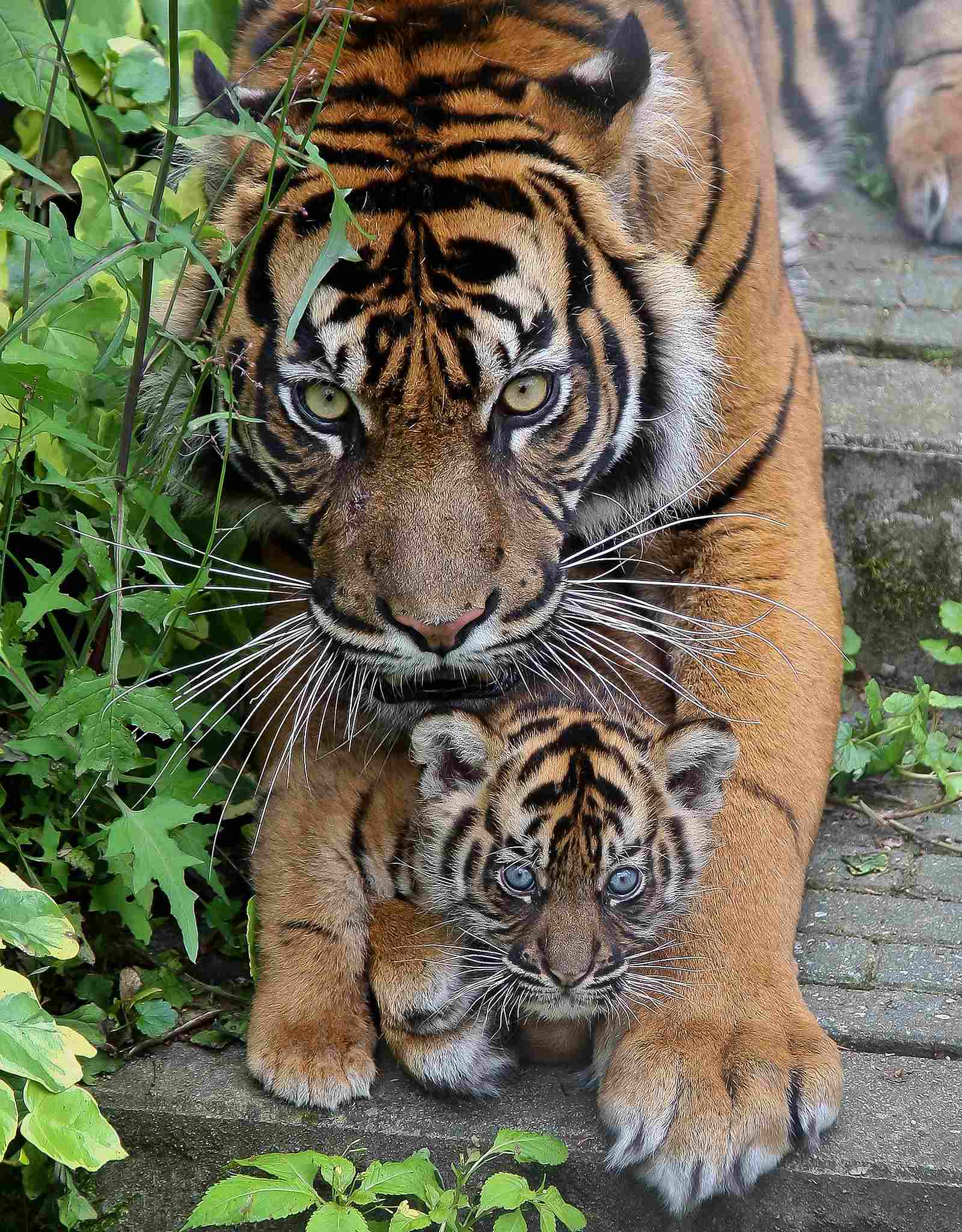
Komodo Dragon:
Limited parental care; females protect nests, but offspring are independent post-hatching.
Hatchlings face high mortality rates due to predation and cannibalism.
Tiger:
Intensive maternal care, with cubs staying with the mother for an extended period.
Females teach hunting skills, providing protection and sustenance.
Comparison: Tigers display more intricate parental behavior, contributing to higher cub survival rates compared to Komodo Dragons.
Ecological Implications: Parental care influences the success of offspring, impacting the predator-prey balance.
20. Proximity to Human-Inhabited Areas:
Komodo Dragon:
Found on specific Indonesian islands, with limited interaction with densely populated areas.
Human activities, including habitat alteration, pose threats to their populations.
Tiger:
Historic range encompassed various habitats near human settlements.
Increasing human-wildlife conflict due to habitat loss and competition for resources.
Comparison: Tigers historically had a broader range near human settlements, increasing the likelihood of conflicts.
Ecological Implications: Human interactions affect the conservation status of these species and their roles within ecosystems.
21. Behavior Toward Humans:
Komodo Dragon:
Generally avoids humans, but instances of attacks reported, usually related to feeling threatened.
Human safety precautions are necessary when in close proximity.
Tiger:
Can display aggressive behavior if threatened or cornered.
Human-wildlife conflict poses risks to both tigers and human populations.
Comparison: Both species can pose threats to humans, requiring awareness and precautions.
Ecological Implications: Understanding and managing interactions with humans are crucial for the conservation of these apex predators.
22. Danger Posed to Humans:
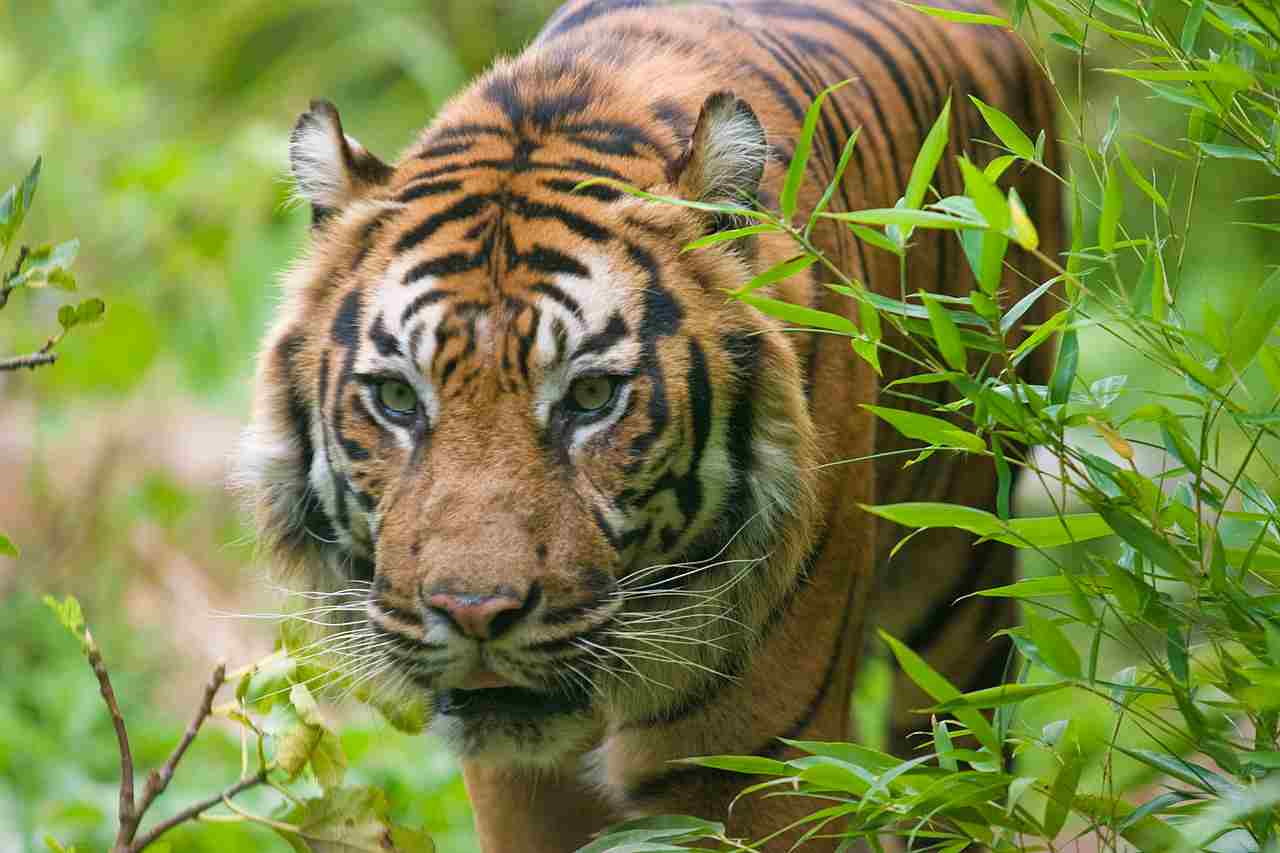
Komodo Dragon:
Considered potentially dangerous, capable of inflicting serious injuries with their bite.
Rare instances of attacks on humans, often provoked or due to misunderstandings.
Tiger:
More significant danger due to their size, strength, and predatory instincts.
Human fatalities occur in cases of conflict or when tigers become habituated to human presence.
Comparison: Tigers pose a higher danger to humans due to their size and predatory nature.
Ecological Implications: Human-wildlife conflict management is crucial to mitigate risks and ensure coexistence.
23. Associated Precautions:
Komodo Dragon:
Caution advised during visits to their natural habitat; maintaining a safe distance is essential.
Awareness of their presence and behavior to prevent inadvertent provocation.
Tiger:
Strict precautions in regions with tiger populations, including secure waste disposal and avoiding areas of recent tiger activity.
Education on tiger behavior and habitat to reduce the risk of conflicts.
Comparison: Similar precautions are necessary, emphasizing the importance of understanding and respecting the behavior of these apex predators.
Ecological Implications: Human behavior influences the safety of both species and their habitats.
24. Conservation Status:
Komodo Dragon:
Listed as Vulnerable on the IUCN Red List.
Threatened by habitat loss, human activities, and potential climate change impacts.
Tiger:
Various subspecies have different conservation statuses, with some listed as Endangered or Critically Endangered.
Threats include habitat loss, poaching, and human-wildlife conflict.
Comparison: Both species face significant conservation challenges, necessitating focused efforts for their preservation.
Ecological Implications: Conservation actions impact biodiversity and the health of ecosystems where these apex predators play key roles.
*Summary of Comparison
Taxonomy:
Komodo Dragon: Reptile (Varanus komodoensis)
Tiger: Mammal (Panthera tigris)
Appearance:
Komodo Dragon: Scaled, cryptic coloration, forked tongue
Tiger: Feline, orange coat, dark stripes
Size:
Komodo Dragon: 7-10 feet (length)
Tiger: Up to 10 feet (length)
Weight:
Komodo Dragon: Around 150 pounds
Tiger: 400-700 pounds (males)
Bite Force (PSI):
Komodo Dragon: 600 PSI
Tiger: 1,000 PSI
Physical Offensive Advantages:
Komodo Dragon: Bite and bacterial infection strategy
Tiger: Speed, powerful jaws, and claws
Physical Defensive Advantages:
Komodo Dragon: Tough, scaled skin
Tiger: Camouflage, agility
Speed:
Komodo Dragon: Up to 12 mph
Tiger: Up to 40 mph
Agility:
Komodo Dragon: Climbing abilities, agile for size
Tiger: Highly agile, versatile
Senses:
Komodo Dragon: Good vision, hearing, forked tongue
Tiger: Excellent night vision, acute sense of smell
Overall Physical Capacity:
Komodo Dragon: Endurance, stamina
Tiger: Strength, speed, agility
Habitat Preference(s) and Geographic Region:
Komodo Dragon: Indonesian islands
Tiger: Varied habitats across Asia
Tracks:
Komodo Dragon: Clawed tracks, dragging tail mark
Tiger: Padded paw prints, four-toe pattern
Lifespan:
Komodo Dragon: 20-30 years
Tiger: 10-15 years
Mode of Feeding:
Komodo Dragon: Bite and wait, scavenging
Tiger: Stalking, ambushing, and chasing
Intelligence:
Komodo Dragon: Limited studies suggest cognitive intelligence
Tiger: Highly intelligent, problem-solving skills
Social Behavior:
Komodo Dragon: Generally solitary
Tiger: Mostly solitary, some social behavior
Mode of Reproduction:
Komodo Dragon: Oviparous, egg-laying
Tiger: Viviparous, live birth
Parental Behavior:
Komodo Dragon: Limited parental care
Tiger: Intensive maternal care
Proximity to Human-Inhabited Areas:
Komodo Dragon: Limited to specific islands
Tiger: Historic range near human settlements
Behavior Toward Humans:
Komodo Dragon: Generally avoids, rare attacks
Tiger: Can be aggressive, especially when threatened
Danger Posed to Humans:
Komodo Dragon: Potentially dangerous bites
Tiger: More significant danger due to size and predatory nature
Associated Precautions:
Komodo Dragon: Caution during visits, maintaining distance
Tiger: Strict precautions, education on tiger behavior
Conservation Status:
Komodo Dragon: Vulnerable
Tiger: Various subspecies, some Endangered or Critically Endangered
Conclusion
I. Similarities:
Both the Komodo Dragon and Tiger are apex predators in their respective ecosystems.
Face conservation threats due to habitat loss, human activities, and potential climate change impacts.
II. Differences:
Varied reproductive strategies: Komodo Dragons are oviparous with minimal parental care, while Tigers are viviparous with extensive maternal involvement.
Tigers pose a higher danger to humans due to their size and predatory nature compared to Komodo Dragons.

